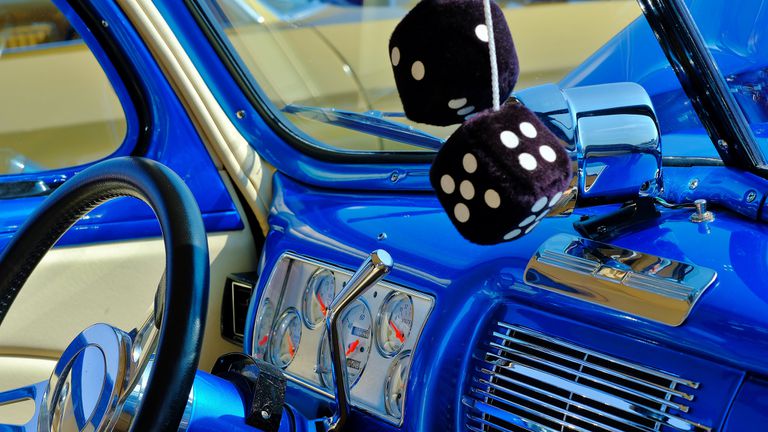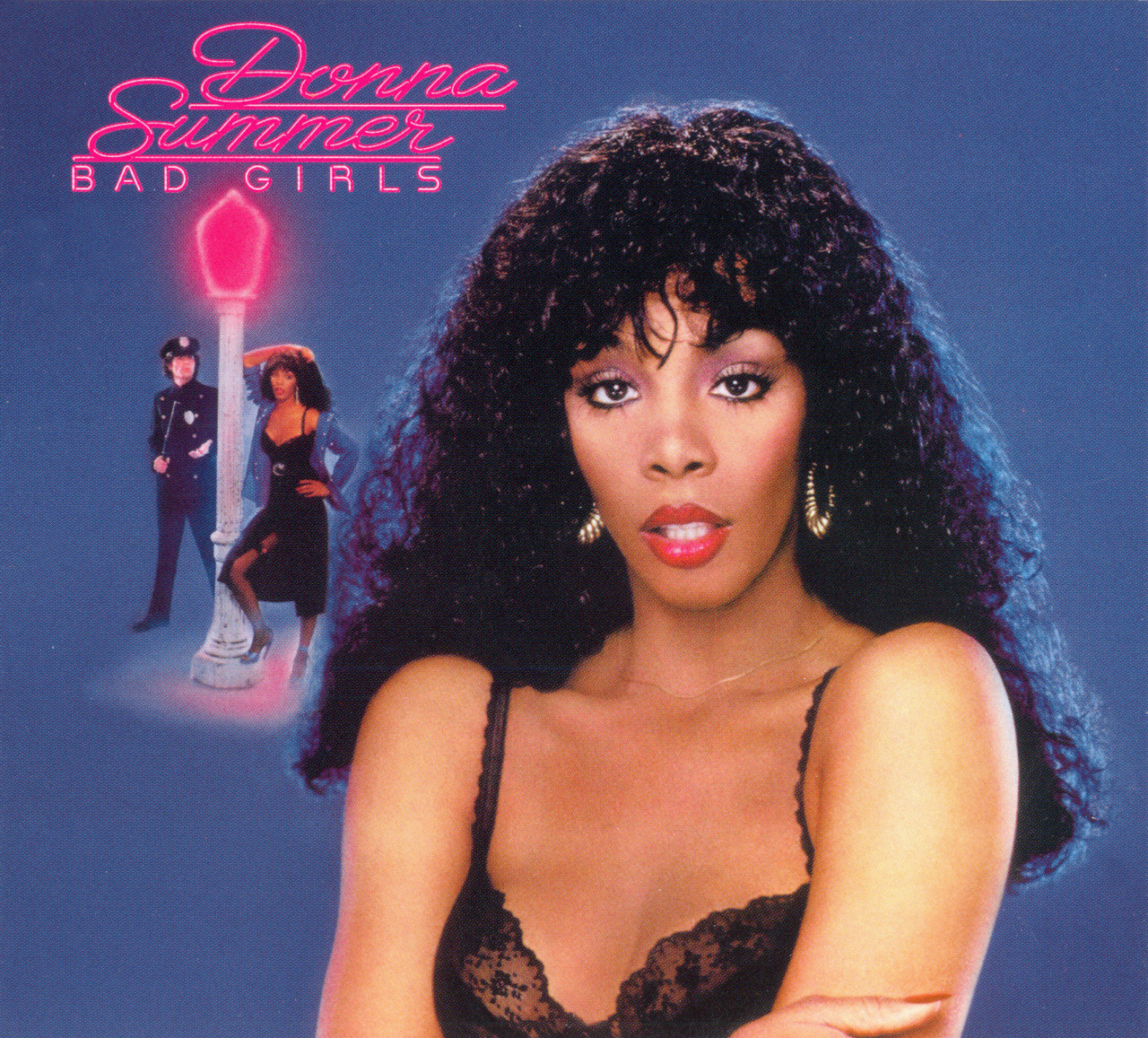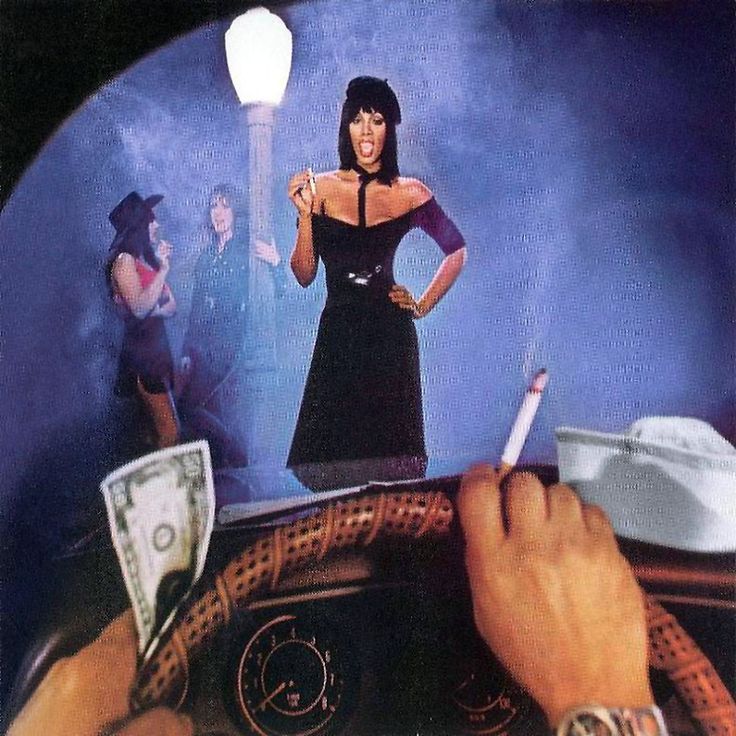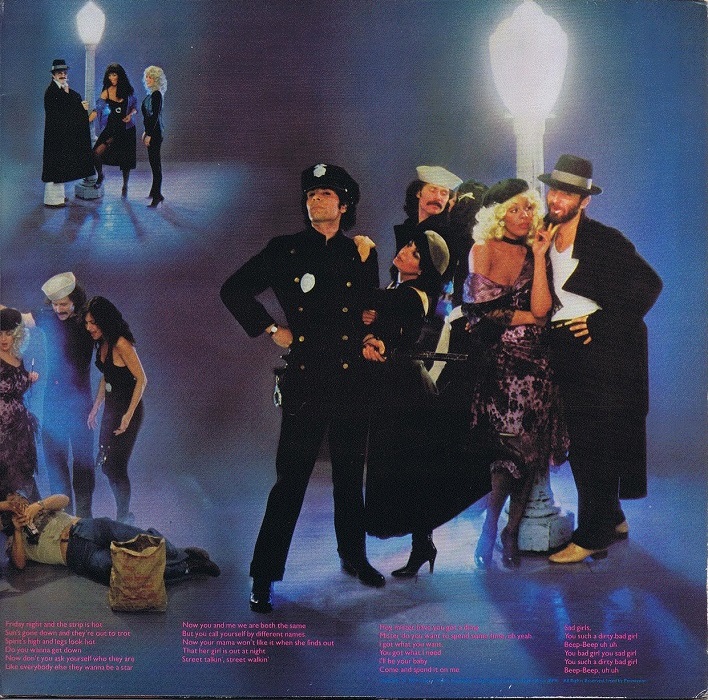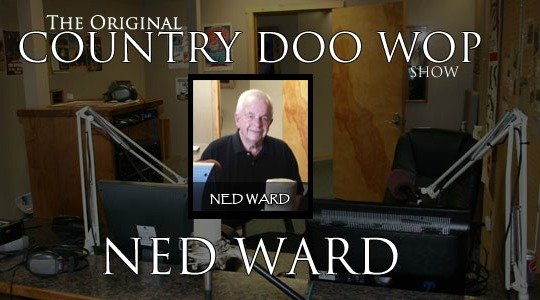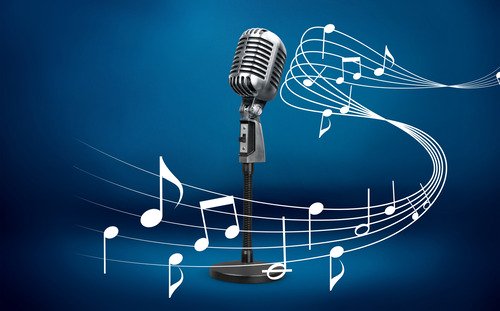Vinyl Record Lovers Newsletter
Welcome to my monthly Newsletter. Thank you for subscribing.
The golden age of vinyl records and all things retro are the highlights of my Newsletter.
Writing stories based on my vinyl record collection is my way of sharing memories and keeping the oldies alive.
I do appreciate the time you take to read my newsletter.
Issue #074 - April 30, 2019.
In This Issue:
- What's New?
- Dicing with Death (The fuzzy dice story)
- The 70s Series, Part 7 - Songs and Events from the year 1975.
- Album Cover Art by Randy McNutt.
- She's Back! Album Cover Art of The Month.
- High Dollar Vinyl - Hearing Music Sound Better Than You Ever Thought It Could.
- The Original Country Doo-Wop Show.
What's New?
Favorite pages this past month include the "Last Cowboy Song Lyrics." Listed under Great Country Classics, it seems a large group of visitors to this site never tire of the Cowboy way of life. However, the four largest page views and visitors remains the "Doo-Wop," "Golden Oldies," "Girl Groups," and the "Best Oldies Cover Songs" pages. (pages open in new window)
==================================
Ever wonder how the Fuzzy Dice craze began? Let's turn back the clock and understand the real meaning of "Dicing with Death" and how the reference to street racing was a far cry from the military air combat missions of WWII.
==================================
The year 1975 - Lots of events to remember and too many great
songs to choose from. The middle of the decade is when the giant mirror
ball began spinning, and the Disco Era was born. Polyester was now
spandex, and nightclubs and watering holes were transformed into
discotheques.
===================================
When I first began to collect vinyl LPs over 50 years ago it was, of course, for the music. That soon changed as the Album cover art work became an obsession with me. This month my friend, Randy McNutt, gives his view of Album Cover Art from his book, Spinning The Groove....a book I highly recommend.
===================================
Album Cover Art of the Month - Bad Girls is the
seventh studio album by my favorite Disco good girl, Donna Summer. Originally
issued as a double album, Bad Girls became the best-selling album of
Summer's career. I'll share my personal original double album and put this disco
queen back in the spotlight.
===================================
Remember Tom Port and his high dollar vinyl, some selling for $1,000 each? I'll share with you some of Tom's equipment and what his hobby is all about----hearing
music sound better than you ever thought it could.
===================================
Updates and new hours for the Original Country Doo-Wop Show with my DJ buddy, Ned Ward, and a link located in the right column for his popular Doo-Wop radio program, Jukebox Memories.
===================================
Let's get started....
Fuzzy Dice Memories
Believe it or not, there is history and symbolism behind those innocent-looking fuzzy cubes. In the 1940s, 50s & 60s, no serious hot rod was complete without a set of fuzzy dice hanging from the rear view mirror.
The "Fuzzy Dice" craze began during World War II when pilots would place dice on their instrument panel with sevens showing to bring them good luck on their missions. Another, perhaps grimmer variant on the story is that the dice on the panel were a reminder that every flight was a figurative "roll of the dice" as to whether the plane would return safely to base.
Young returning servicemen with money to burn and suped-up older cars would participate in illegal street races, replacing the adrenaline rush many missed from their days in combat. As a reminder of those days, some would place plastic dice from the rear view mirrors of the cars. Nobody knows which street racer hung the first pair of plastic dice over his rear view mirror, invoking the old pilots' superstition. Every flight was a gamble and only the lucky winners got to go home.
However, the cheesy plastic often melted in the sunlight, and were eventually replaced with flocked material...and so the Lucky Fuzzy Dice was born with the birth of the American hot-rod culture. Hanging dice on the rear view mirror meant the driver was ready and willing to be "Dicing with Death" in the dangerous and unregulated world of street racing.
Fuzzy Dice became part of a look that identified the alternative culture, like a pack of Lucky Strikes rolled up in a t-shirt. It was this "Dicing with Death" and play on words that inspired the creation of the dashboard dice. As times changed and racing became an organized sport, the "so cool" dice remained part of the custom car culture deep into the 1970s.
Just like my vinyl record memories, a newer generation is discovering retro fads and fashions, and symbols like fuzzy dice are coming back into style. Check out some of those Saturday night parking lots in your area, featuring tricked-out customs and cool "dudes" talking about the way it was.
They're no longer symbols of rebellion and recklessness, but of nostalgia.
The 70s, Part 7 - The Year 1975
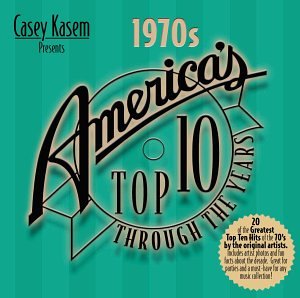
The '70s decade continues with some notable sounds and events from the year 1975.
The first half of the decade may have been hopelessly devoted to the notion of having a nice day, but a new fad was descending as the giant mirror ball began spinning and the Disco era was born.
The dance craze "The Hustle" was fueled by a massive hit single that catapulted dance culture into Middle America. Everyone wanted to do the dance, and disco lessons became more popular than baseball.
The masses began putting on their boogie shoes and going out to shake their groove things on the weekend. They would continue doing so as the craze grew until it touched every corner of civilization.
Even the nearly dead roller-skating industry had a revival as some brilliant souls convinced Disco-maniacs to go mobile and participate in splinter-fad "roller-boggie," giving new life to the decaying rinks around the country, which hadn't seen business in years.
1975 - Top Songs
- Love Will Keep Us Together (4/75, Pop #1) It's easy to see why The Captain & Tennille's song was such a big hit: It blended the sounds of the two most consistent hitmakers of the early '70s. The single combined the romanticism of the Carpenters with the dynamics of Elton John. Written by Neil Sedaka, The Captain, Daryl Dragon produced their vibrant recording, which was the #1 single of 1975 and went on to win a Grammy as Record of the Year.
- Feelings (6/75, pop #6) Morris Albert's 1975 hit was a throwback to another musical era. It's the sort of elegant, cocktail-lounge ballad that had been in decline for a decade. Nonetheless, it became a Top 10 hit and remained on the charts for 32 weeks---longer than any other single that year. It also became a staple of nightclub, paino bars, and wedding chapels and, as such, it quickly became a cliche'. Albert, who wrote and produced his one big hit, was born in Brazil.
- Get Down Tonight (7/75 pop#1, R&B #1) K.C. & The Sunshine Band kicked off a long run of hits with the propulsive "Get Down Tonight," which topped the pop and r&b charts in 1975. The joyful rush of notes in the intro gave the record a unique and sexy sound. Group leaders Harry Wayne Casey and Richard Finch wrote and produced the single. Casey knew the song was a hit the night they recorded it. "I couldn't believe it, it was such an incredible sound." he marvelled in 1990. "I remember they played it back a hundred times, and I just couldn't believe it."
- December, 1963 (Oh, What a Night) (12/75, pop #1) The Four Seasons updated their classic 60s sound with the pop smash it, "December, 1963." The result was the biggest and most enduring hit of their long career. A refashioned dance-shuffle version made the Top 20 in 1994. The song, a man's fond recollection of the night he lost his virginity, includes this disarming and relatable admission: "As I recall, it ended much too soon."
1975 - Events to Remember.
- Lee Trevino, Bobby Nichols, and Jerry Heard are struck by lightning during the second round of the Western Open in Oak Brook, Illinois. (6/27/75)
- Cher weds Greg Allman after having been divorced from Sonny Bono only three days; nine days later, she files for divorce from Allman. (6/30/75)
- Muhammad Ali and Joe Frazier meet in the "Thrilla in Manila," a brutal title bout that goes 14 rounds before Frazier throws in the towel. (6/30/75)
What is Album Cover Art?
by Randy McNutt
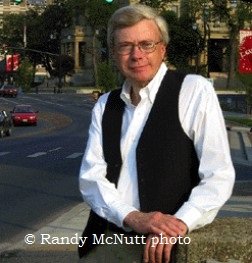
When the compact disc arrived in the 1980s and production of LPs declined, many people lamented the disappearance of album-cover-art.
Some artists have compared it to that of colorful old film posters. It's back now, to a lesser degree of distribution. Because of the twelve-by-twelve-inch format, artists could work more freely than on the smaller-format CD inserts.
In its heyday in the 1970s, album cover art became the second most important question that record companies debated (the music being the other).
More recognizable examples include The Beatles' Yesterday...And Today, which featured the famous butcher cover, pulled by the label because of its offensiveness; the Abraxas cover for Santana; and The Bee Gees' red felt cover for the original Odessa.
Now
that albums are coming back into record shops, album cover art is back
in style. Article from Randy's exciting new book, Spinning the Groove.
Album Cover Art of The Month.
Disco never spawned a brighter star than Donna Summer -- or a more significant album than Summer's 1979 classic, Bad Girls.
The album's
driving title track and equally hot numbers like "Hot Stuff" and "Dim
All the Lights" became massive hits, sailing to, respectively, No. 1,
No. 1, and No. 2 on the pop singles chart.
Summer managed
irresistible melodic hooks into innovative arrangements that blended
dance-pop grace with guitar-rock muscle, and the resulting tunes were as
popular with roller-skating suburban kids as they were with the
sophisticated club crowd.
Bad Girls was proof that a personality as
vibrant as Summer's could flourish in a Disco world she surely owned. The album's impact on
dance music could not, and cannot, be overstated.
Click on photos to enlarge and see 4 arrows in top right corner of enlarged photo. Click again for larger image. Photo on left is back cover of album and photo on right is inside of this gatefold double album.
Better Record Series - Part 3
A Good Record Is An Education.
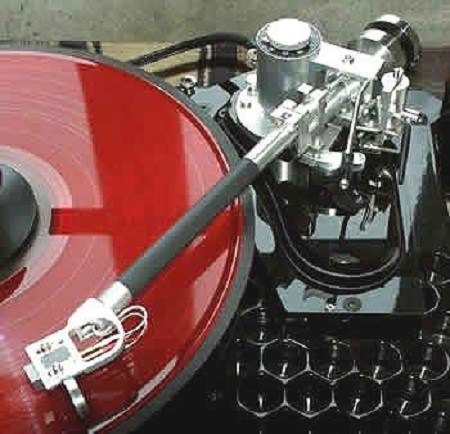
Tom Port sells high dollar vinyl records. The November, 2018 newsletter entry and the December follow-up will bring
you up to date with Parts 1 and 2 if you have recently signed up for our newsletter and
want to catch up.
This part 3 in the Better-Records series
centers on Tom's equipment and what his hobby is all about -- hearing
music sound better than you ever thought it could.
The amp Tom
uses as the hub of his Shootout machine is pretty ordinary by the
standards of your typical tube-loving, power-junkie audiophile: a
70s Japanese intergrated transistor amp rated at a puny 30 watts per
channel. "I use a low-power, solid state amp because it doesn't color the music," he explains. "Tubes make everything sound warm and add distortion. That can sound nice, but I need accuracy."
However,
Tom's other components are much more upscale. The Legacy Focus speakers
have been paired with Townshend Super Tweeters, for example, and the
turntable sports a Tri-Planar Precision Tonearm and a Dynavector 17D3
cartridge as shown below.
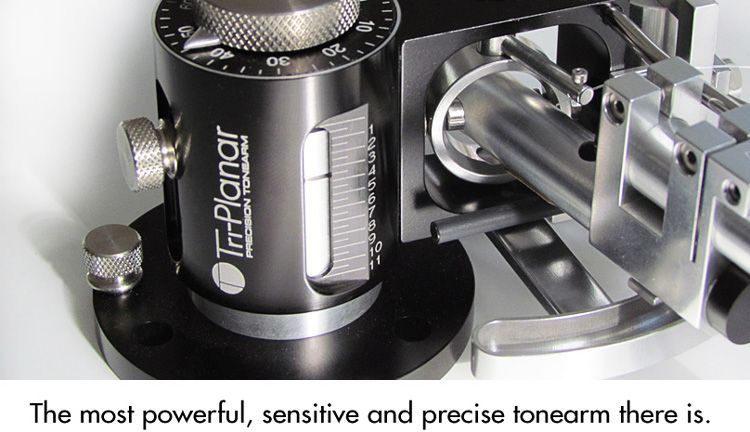
Everything has been carefully selected for sonic neutrality. This isn't about emphasizing mega-bass or shimmering highs.
The goal is flat frequency response, getting as close as possible to the sound on the original master tape, and using this tonearm gives you a feel of surgical precision and preciseness that really gives you confidence that you will have near-perfect playback every time it's used. The price for Port's shootout rig is in the neighborhood of $35,000.
A good record is an education for us too.
Tom explains; this is not only how we've managed to learn about the pressing in question; it's the same process that allows us to make improvements in the sound of the stereo.
It's learning how to identify what is right and
what is wrong with the sound of any pressing -- the same process that
helps us recognize whether any change to the stereo makes it sound
better or worse, and to try and figure out by how much and in what way.
And
the best part is, like the practice of any skill, the more you do it,
the better you get at it. We do it all day, every day. Not because we're
noble or dedicated. We do it because we enjoy it. It's fun. It's the
most fun part of this job. Discovering great sounding recordings is a
THRILL. It's what this hobby is all about -- hearing music sound better
than you ever thought it could. Read more at Better-Records.
Next up in the Better Records Series:
- Change For The Better
- Training Your Ears
- Cheap Tables
- Better vs Not-better
The Original
Country Doo-Wop Show!
Listen to my favorite Country Doo-Wop show Monday thru Saturday from 1pm to 3pm, all times Pacific.
DJ Ned Ward turns music into memories playing yesterday's Country Favorites and the Classic Hits of the 50's and 60's Doo Wop style on the new and exciting KNCP Newberry Mix 107.3 FM.
You won't be disappointed.
What's Next?
The year 1976...former porn star Andrea True topped the dance chart with her R-rated disco hit, "More, More, More (Pt.1) while Afternoon Delight, known for its close harmony and sexually suggestive wordplay, "Gonna find my baby, gonna hold her tight, Gonna grab some Afternoon Delight," became another top song in 1976.
Been working on The Buddy Holly Story, one of my favorite movies from 1978. Hope to finish it during May. Two great scenes, the roller-rink scene and Buddy at the Apollo Theater. Great music.
Subscribe below or above in top right column and enjoy all articles FREE.
Fifties Doo-Wop page - Classic Street Corner Symphonies.
Best Cover Songs - Are some better than the original?
Cruise on over to our Golden Oldies page.
Return to Vinyl Record Memories Home Page.
Do you have questions, comments or suggestions?
If you have any favorite vinyl record topics you'd like to see on this site, please click here and enter your information in the contact form. I would love to hear from you.
All the best,
Danny Lee Sandrik
Vinyl Record Memories
